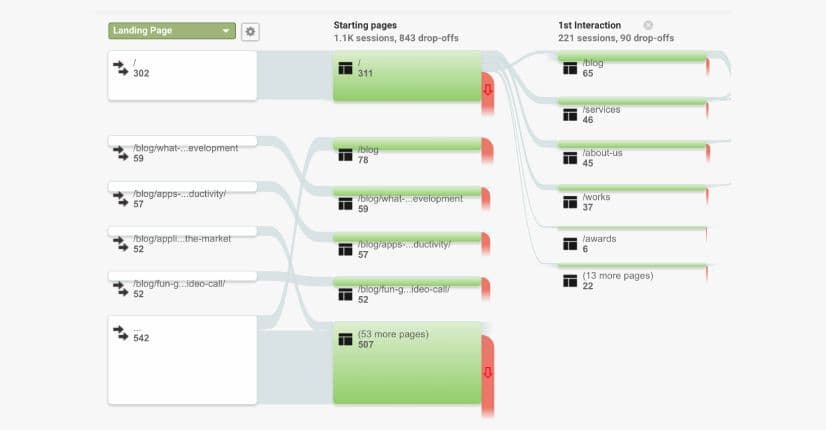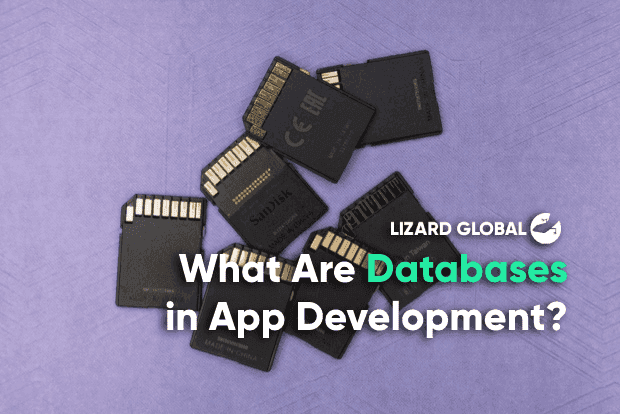user engagement
app development
+ 5 more ...
4 Tips and Tricks for Improving your App's User Engagement
28 Oct 2021
by Lotte, Digital Content Specialist
28 Oct 2021
by Lotte, Digital Content Specialist
user engagement
app development
retention rate
user experience
key metrics
interaction
loyalty and reward
4 Tips and Tricks for Improving your App's User Engagement
Table of contents
Contact us
We will get back to you in the next 48 hours.

With these tips and tricks, you can improve your app’s user engagement and work towards a better retention rate and loyal customer base.
As a business owner with your own mobile- or web application, you want your solution to blossom into a successful product and make a positive impact on your target audience. Probably one of the best ways to assure the success of your product is by focusing on user engagement and measuring whether users see value in your product or service. An optimized level of user engagement can have a major impact on your user retention and, therefore, create a loyal customer base with increased and stable revenue streams.
What is user engagement?
User engagement, or product engagement, is a term that refers to every interaction that your users have with your application. It may be as simple as logging in or clicking a button, or it could be linked to the completion of a specific activity or series of activities within your product. Engaged users are different from other users, since they perform more valuable actions and have a closer relationship with your brand as a whole. Generally, you can divide your types of users into three categories:
• All users: This is the biggest segment of your audience and includes every user that has interacted with your product, from visiting your website to downloading your application.
• Active users: Active users are those who actively interact with your application. This group is significantly smaller than all users, since they have performed at least one meaningful activity in your application, such as registering, subscribing for a newsletter, or coming back a few times after the first use. With the right strategy, you can turn active users into engaged users with relative ease. We’ll talk about that a bit more below in this blog.
• Engaged users: Engaged users are the most valuable users you can have. They have performed much more valuable actions than active users, such as making a purchase or using the app on a weekly or daily basis for a longer period of time. Engaged users are most likely to recommend your app to a friend or colleague, pay for the associated services, and more, since they have experienced the value it adds to their lives.

Key metrics to measure engagement
Because the user engagement of your app relies on various factors that differ per product and market, there isn’t one uniform metric that represents user engagement. Important is to track the leading indicators that showcase the level of user engagement that matters for your application and objectives.
1. Number of downloads & uninstalls
The number of downloads is an essential indicator of the level of engagement with your app. Not only does it show how many people have installed the app and probably interacted with it at least once, it also lets you track how your users ended up in the app store to download your app, which gives you insights into the successfulness of your marketing and advertising strategies. Besides the number of people that downloaded your app, it’s also valuable to know how many people uninstalled your app. Both these metrics show if you’re truly connecting with your users or not. You can find these metrics in Google Play Store’s and Apple App Store’s reports.
2. Active app users
The active user metric differs from the number of downloads metrics in the way it determines whether users are using the app on a regular basis rather than merely downloading it. DAU (daily active users), WAU (weekly active users), MAU (monthly active users), and stickiness (DAU/MAU) are a few essential metrics to track for a better understanding of your app usage and engagement. While a new and growing app should have more new users than active users, a mature app should have a higher number of active users than the number of new users, indicating that users are coming back and using the app. The number of active app users can be found in data analysis tools like Google Analytics or AWS Mobile Analytics.
3. Session interval & session length
Session interval is the amount of time that passes between two consecutive uses of your app, and it indicates how frequently your users open it and interact with it. This can be a good metric to gauge engagement as it indicates how frequently users return to your app. Not only does this measure the retention and stickiness rate, it also provides you with some direct feedback for areas of improvement.
Besides session interval, session length also provides unique insights for analysing your app’s user engagement. The session length entails the time between the user's opening and shutting of an app, or between the first and last activity he or she performs in your app. Longer session lengths represent a higher level of engagement.
4. Behaviour flow
A behaviour flow analysis can be used to track the overall number of visits per page, page exits, and page navigation flow. This way, the actions of your app's users can be visualized, which can help you understand the specific actions users performed. The metric of the behaviour flow of your users is a key item in determining how to convert users into paying customers, as you can clearly track where and how often they stop engaging. With this information, you can launch in-app marketing campaigns to reactivate lost users and optimize user flows to make navigation and overall usage easier.

How to improve your app’s user engagement
The level of engagement within your application is highly influenced by the way your users experience your product or service. The better the experience, the higher the chance they will actively interact and engage with your app, and eventually become a loyal customer. Improving the engagement within your app doesn’t necessarily entail big changes in functionality or features. On the contrary, small adaptations can often have a significant impact on the way your users experience your applications.
Did you already try to improve your app’s user engagement but without success? Or do you have another question? Get in touch with one of our experts on Facebook, LinkedIn, or Twitter and follow us to stay up-to-date with the latest tech news and blogs!
1. Optimizing with A/B testing
A higher level of engagement usually goes hand in hand with a good customer experience. Navigating through an app should come naturally and without effort. One way to work towards an optimal user experience is by continuously implementing improvements, design-wise and functionality-wise. These improvements don’t necessarily have to be massive, even small changes can have a major impact on the way your users are engaging with your app. An effective technique for continuous testing and adapting is A/B testing, which involves small iterations of experiments with two different versions of a specific design element or functionality. What you do is implement a version A and a version B of your app, and let a group of users interact with version A, and another group with version B. After a while, you should have enough data to find out which one of the two versions has resulted in a higher level of engagement.
2. Meaningful features
As the app stores and our smartphones are bulging with applications for all kinds of purposes, it’s becoming increasingly difficult to choose one app over another, especially if all functionalities and features are pretty much the same. One way to attract and engage your users is by providing them with features that speak to your users on a personal level and therefore create a more meaningful experience. In order to find out what these meaningful features entail, you need to get into the heads of your users. This is best done with a Design Thinking approach. The human-centered Design Thinking process focuses on empathizing with your users on a deeper level in order to create an understanding of their needs, preferences and problems. Once these needs, preferences and problems are identified, you can optimize your app’s features to fit the unique personalities of your users.
3. Challenge your users
A great way to engage your users is by implementing a loyalty & reward program and gamified features. This way, your users are stimulated to engage with your app and continue to use it in order to win rewards. These rewards don’t necessarily consist of discounts, free trials or other things that eat at the revenue and profitability of your application. On the contrary, it could be something as simple as virtual rewards, such as special avatars, trophies or badges, and other in-app rewards that make your users stand out from other users.
It can be demotivating to start using an app if you know you’ll have to spend loads of time and effort to reach your first reward. To tackle this hurdle, you can give your users a head start by providing them with an amount of points or progress after signing up or for completing simple tasks, such as their profile completion or inviting a friend. Users are much more likely to continue their way towards more rewards if they already have a basis to start with.
4. Cultivate a community
As mentioned in our blog about user retention, community spirit in an application can greatly boost the user experience. We are social beings, and we like to connect with each other on a human level. No matter if it’s family, friends, colleagues or strangers, making sure your app is community-driven can positively impact the engagement between your users and your app. Not only can human-to-human communication increase the level of engagement, also gamified challenges and leaderboards can have a major impact on the way your users interact with your app. You can also make use of social media channels such as Facebook and Instagram to promote the app or highlight success stories, answer questions and generally create a robust and interactive community.
Need a hand?
At Lizard Global, we know that every single one of your users is unique. They have their own needs and preferences, and they all interact with your application in different ways. Taking that into account, it seems impossible to create an app that satisfies all users. However, years of experience taught us that, as long as you get to know your audience segments on a deeper level and put yourself in their shoes, you can greatly improve the general user experience of your app and therefore increase your app’s user engagement.
Are you not sure how to define your target audience? Or are you struggling with finding the right metrics for tracking your app’s user engagement? We can help you with that! Get in touch with us via our contact form or send us a message on WhatsApp: +60 18 35 65 702.

With these tips and tricks, you can improve your app’s user engagement and work towards a better retention rate and loyal customer base.
As a business owner with your own mobile- or web application, you want your solution to blossom into a successful product and make a positive impact on your target audience. Probably one of the best ways to assure the success of your product is by focusing on user engagement and measuring whether users see value in your product or service. An optimized level of user engagement can have a major impact on your user retention and, therefore, create a loyal customer base with increased and stable revenue streams.
What is user engagement?
User engagement, or product engagement, is a term that refers to every interaction that your users have with your application. It may be as simple as logging in or clicking a button, or it could be linked to the completion of a specific activity or series of activities within your product. Engaged users are different from other users, since they perform more valuable actions and have a closer relationship with your brand as a whole. Generally, you can divide your types of users into three categories:
• All users: This is the biggest segment of your audience and includes every user that has interacted with your product, from visiting your website to downloading your application.
• Active users: Active users are those who actively interact with your application. This group is significantly smaller than all users, since they have performed at least one meaningful activity in your application, such as registering, subscribing for a newsletter, or coming back a few times after the first use. With the right strategy, you can turn active users into engaged users with relative ease. We’ll talk about that a bit more below in this blog.
• Engaged users: Engaged users are the most valuable users you can have. They have performed much more valuable actions than active users, such as making a purchase or using the app on a weekly or daily basis for a longer period of time. Engaged users are most likely to recommend your app to a friend or colleague, pay for the associated services, and more, since they have experienced the value it adds to their lives.

Key metrics to measure engagement
Because the user engagement of your app relies on various factors that differ per product and market, there isn’t one uniform metric that represents user engagement. Important is to track the leading indicators that showcase the level of user engagement that matters for your application and objectives.
1. Number of downloads & uninstalls
The number of downloads is an essential indicator of the level of engagement with your app. Not only does it show how many people have installed the app and probably interacted with it at least once, it also lets you track how your users ended up in the app store to download your app, which gives you insights into the successfulness of your marketing and advertising strategies. Besides the number of people that downloaded your app, it’s also valuable to know how many people uninstalled your app. Both these metrics show if you’re truly connecting with your users or not. You can find these metrics in Google Play Store’s and Apple App Store’s reports.
2. Active app users
The active user metric differs from the number of downloads metrics in the way it determines whether users are using the app on a regular basis rather than merely downloading it. DAU (daily active users), WAU (weekly active users), MAU (monthly active users), and stickiness (DAU/MAU) are a few essential metrics to track for a better understanding of your app usage and engagement. While a new and growing app should have more new users than active users, a mature app should have a higher number of active users than the number of new users, indicating that users are coming back and using the app. The number of active app users can be found in data analysis tools like Google Analytics or AWS Mobile Analytics.
3. Session interval & session length
Session interval is the amount of time that passes between two consecutive uses of your app, and it indicates how frequently your users open it and interact with it. This can be a good metric to gauge engagement as it indicates how frequently users return to your app. Not only does this measure the retention and stickiness rate, it also provides you with some direct feedback for areas of improvement.
Besides session interval, session length also provides unique insights for analysing your app’s user engagement. The session length entails the time between the user's opening and shutting of an app, or between the first and last activity he or she performs in your app. Longer session lengths represent a higher level of engagement.
4. Behaviour flow
A behaviour flow analysis can be used to track the overall number of visits per page, page exits, and page navigation flow. This way, the actions of your app's users can be visualized, which can help you understand the specific actions users performed. The metric of the behaviour flow of your users is a key item in determining how to convert users into paying customers, as you can clearly track where and how often they stop engaging. With this information, you can launch in-app marketing campaigns to reactivate lost users and optimize user flows to make navigation and overall usage easier.

How to improve your app’s user engagement
The level of engagement within your application is highly influenced by the way your users experience your product or service. The better the experience, the higher the chance they will actively interact and engage with your app, and eventually become a loyal customer. Improving the engagement within your app doesn’t necessarily entail big changes in functionality or features. On the contrary, small adaptations can often have a significant impact on the way your users experience your applications.
Did you already try to improve your app’s user engagement but without success? Or do you have another question? Get in touch with one of our experts on Facebook, LinkedIn, or Twitter and follow us to stay up-to-date with the latest tech news and blogs!
1. Optimizing with A/B testing
A higher level of engagement usually goes hand in hand with a good customer experience. Navigating through an app should come naturally and without effort. One way to work towards an optimal user experience is by continuously implementing improvements, design-wise and functionality-wise. These improvements don’t necessarily have to be massive, even small changes can have a major impact on the way your users are engaging with your app. An effective technique for continuous testing and adapting is A/B testing, which involves small iterations of experiments with two different versions of a specific design element or functionality. What you do is implement a version A and a version B of your app, and let a group of users interact with version A, and another group with version B. After a while, you should have enough data to find out which one of the two versions has resulted in a higher level of engagement.
2. Meaningful features
As the app stores and our smartphones are bulging with applications for all kinds of purposes, it’s becoming increasingly difficult to choose one app over another, especially if all functionalities and features are pretty much the same. One way to attract and engage your users is by providing them with features that speak to your users on a personal level and therefore create a more meaningful experience. In order to find out what these meaningful features entail, you need to get into the heads of your users. This is best done with a Design Thinking approach. The human-centered Design Thinking process focuses on empathizing with your users on a deeper level in order to create an understanding of their needs, preferences and problems. Once these needs, preferences and problems are identified, you can optimize your app’s features to fit the unique personalities of your users.
3. Challenge your users
A great way to engage your users is by implementing a loyalty & reward program and gamified features. This way, your users are stimulated to engage with your app and continue to use it in order to win rewards. These rewards don’t necessarily consist of discounts, free trials or other things that eat at the revenue and profitability of your application. On the contrary, it could be something as simple as virtual rewards, such as special avatars, trophies or badges, and other in-app rewards that make your users stand out from other users.
It can be demotivating to start using an app if you know you’ll have to spend loads of time and effort to reach your first reward. To tackle this hurdle, you can give your users a head start by providing them with an amount of points or progress after signing up or for completing simple tasks, such as their profile completion or inviting a friend. Users are much more likely to continue their way towards more rewards if they already have a basis to start with.
4. Cultivate a community
As mentioned in our blog about user retention, community spirit in an application can greatly boost the user experience. We are social beings, and we like to connect with each other on a human level. No matter if it’s family, friends, colleagues or strangers, making sure your app is community-driven can positively impact the engagement between your users and your app. Not only can human-to-human communication increase the level of engagement, also gamified challenges and leaderboards can have a major impact on the way your users interact with your app. You can also make use of social media channels such as Facebook and Instagram to promote the app or highlight success stories, answer questions and generally create a robust and interactive community.
Need a hand?
At Lizard Global, we know that every single one of your users is unique. They have their own needs and preferences, and they all interact with your application in different ways. Taking that into account, it seems impossible to create an app that satisfies all users. However, years of experience taught us that, as long as you get to know your audience segments on a deeper level and put yourself in their shoes, you can greatly improve the general user experience of your app and therefore increase your app’s user engagement.
Are you not sure how to define your target audience? Or are you struggling with finding the right metrics for tracking your app’s user engagement? We can help you with that! Get in touch with us via our contact form or send us a message on WhatsApp: +60 18 35 65 702.
FAQs

What is user engagement?
Why is user engagement important?
What are the key metrics to measure app engagement?
How do you improve your app’s user engagement?







